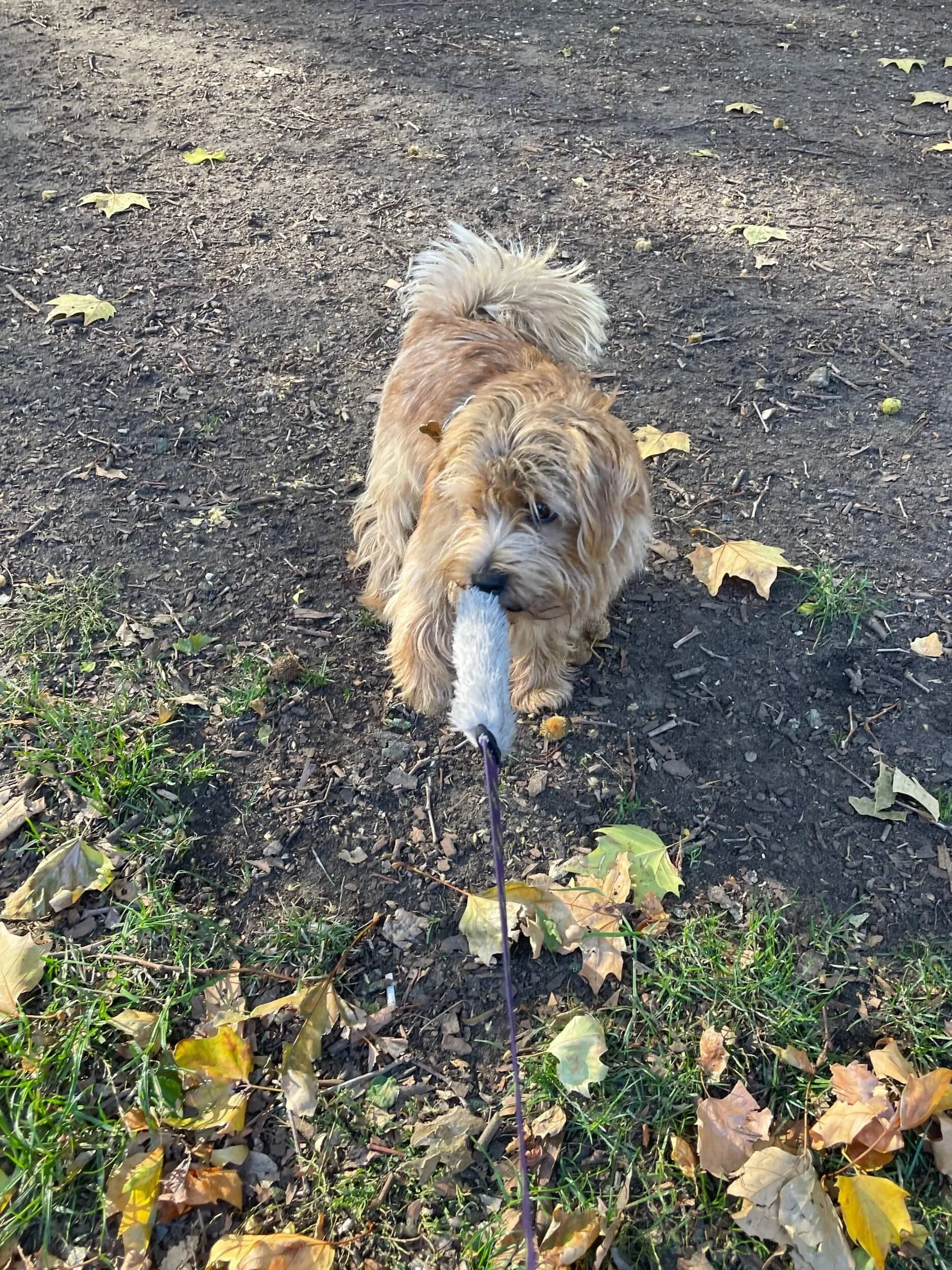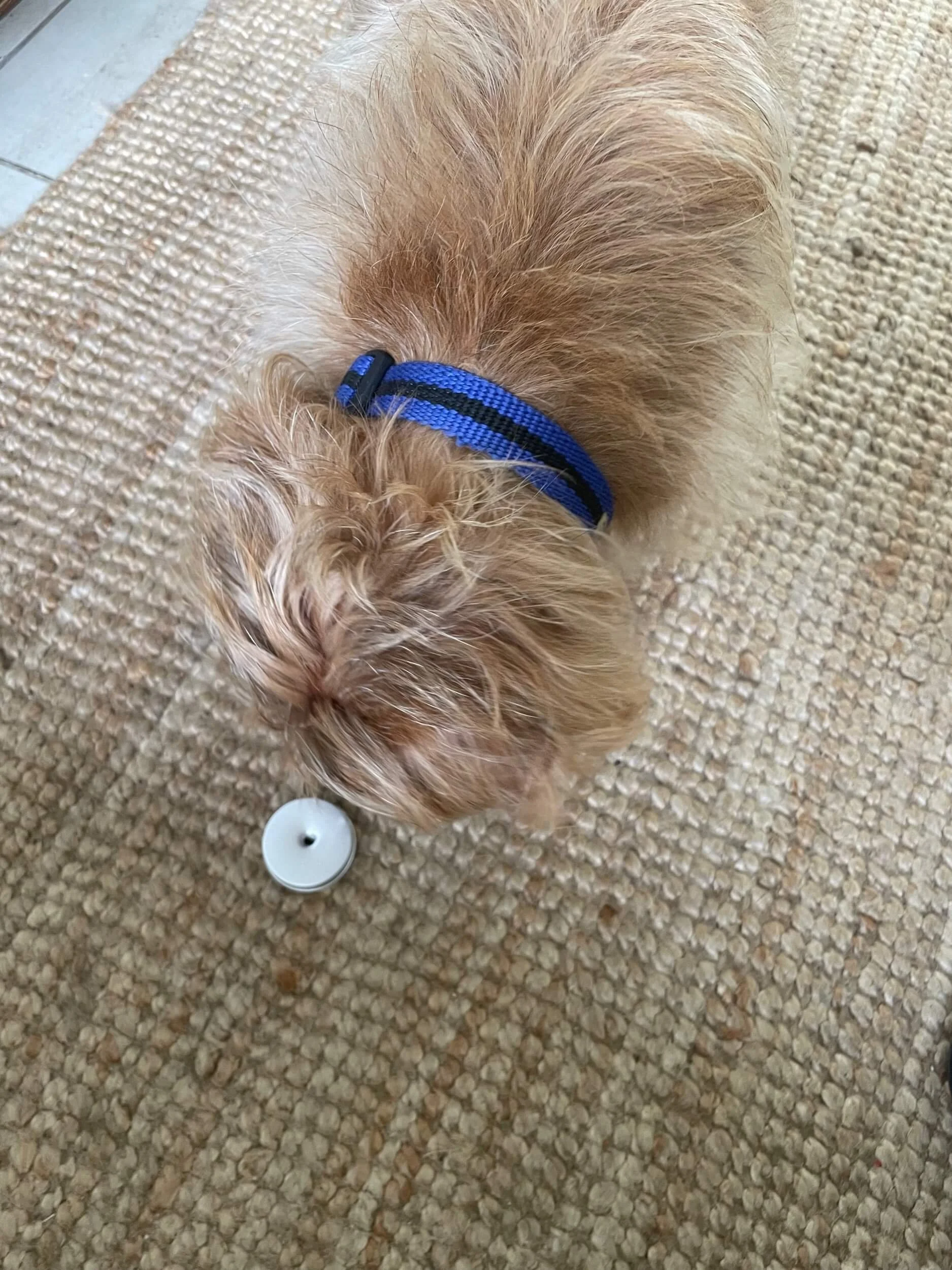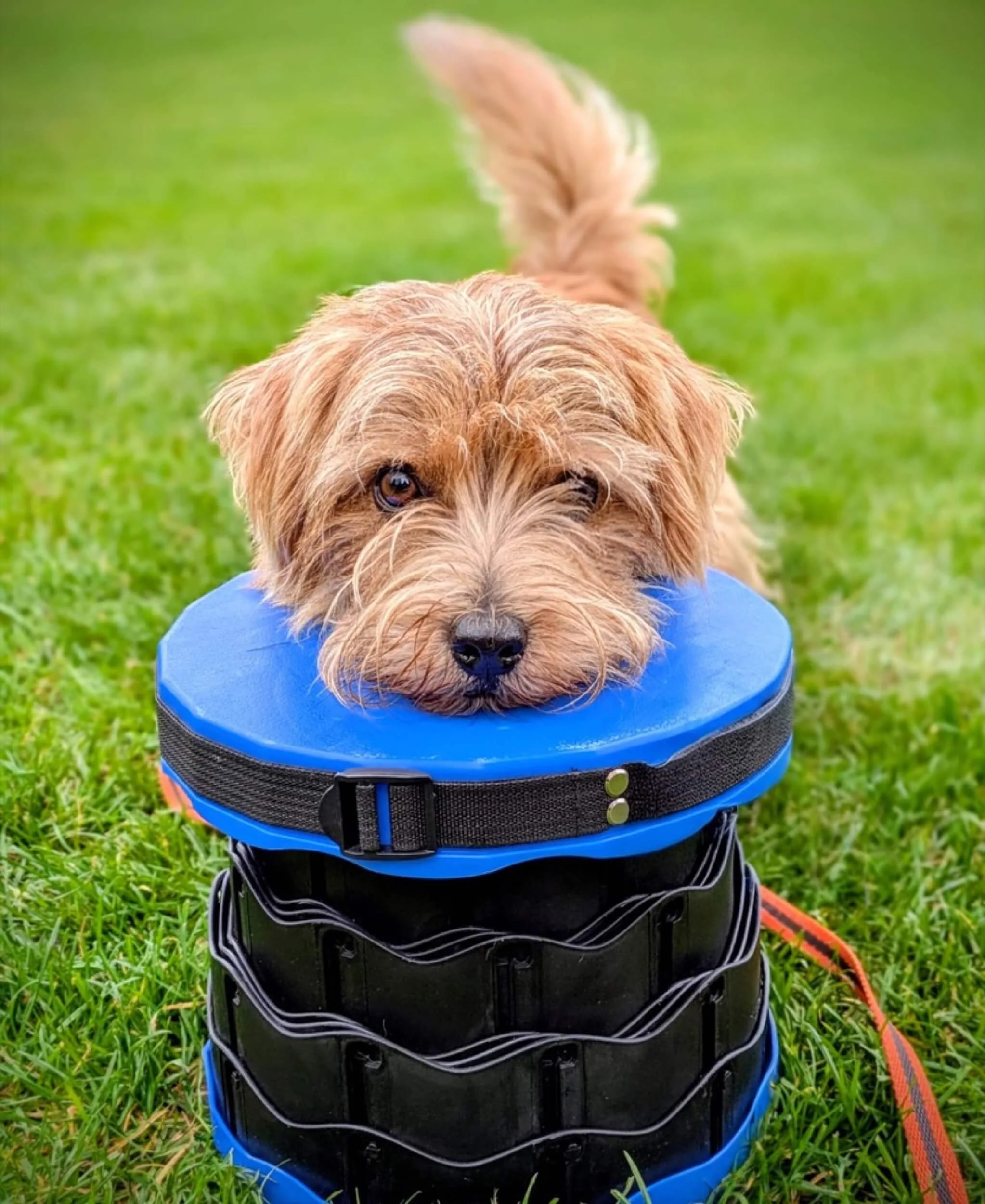Why play matters - building bonds with your dog
Sarah Hickmott BSc (Hons) Head Trainer & Clinical Animal Behaviourist
I always thought play was all about food. Reg, Bob and now Jim have always been exceptionally food motivated, so I assumed treats were the only way to keep Jim engaged and support his training. But since starting training classes at Pet Necessities, trainer and behaviourist Sarah Hickmott has shown me how important play is too—and it doesn’t have to revolve around food.
As Sarah points out, learning to play should be part of every dog’s life. Whether you have a puppy figuring out how to interact appropriately or an older dog learning social skills, encouraging the right type of play brings plenty of benefits.
“It’s not just fun - play allows dogs to express natural behaviours, burn off mental and physical energy and release endorphins - the feel-good hormones that lead to calmer, happier and more confident dogs. It also reduces stress, builds confidence and strengthens the bond between you and your dog.”
Fun and games
Every dog is different and each has their own idea of fun. Thanks to Sarah’s advice, I’ve discovered that Jim will give his full focus for a chance to play with his bungee tugger—it’s an absolute winner. Whether it’s chasing a ball, tugging a toy or enjoying food-based games like scent work, it’s all valuable. For Jim, play is a way to bond without turning everything into a training session and at only a year old, he’s got lots of energy for it. And with Bob, who’s less mobile, there are games I can adapt that suit him too.
So over to Sarah…….
Play with Toys
There are endless toys on the market and every dog has their favourite. Some love chasing a ball, others prefer a toy skimming along the floor.
Easy enrichment
Tug is another brilliant way to play together. Often misunderstood as encouraging rough behaviour, a good game of tug actually builds trust and strengthens your bond.
To keep tug under control, teach a reliable “leave” cue. When your dog has hold of the toy, say “leave” once in a calm tone while bunching the toy in your hands and pressing it against your body. This stops the game and teaches them to let go.
Once they release, praise them, use a “take it” cue and resume play. With practice, your dog will respond more quickly and learn that “leave” is not a punishment. This command soon becomes useful in lots of situations.
Sometimes we yield more success from teaching the dog to “leave” by swapping the item with another, such as a yummy food reward. Placing the food near the toy often encourages the dog to release the toy and earn the reward for doing so. If the word “leave” is used at the same time, the food won’t need to be used forever.
Jim rates a tugger game higher than food!
When playing tug, keep it at floor level. It might not be comfortable for our backs, but it’s much safer for the dog and protects their shoulders and neck.
What Not to Accept in Play
Set ground rules: play should be fun but safe.
No jumping for toys: it can lead to over-excitement and risk injury.
Avoid rough-and-tumble games or nipping hands and feet. Habits learned as a puppy can continue into adulthood and may be unsafe.
Stick to their own toys. If your dog steals slippers or other items, try not engaging in a game with that item and redirect them to their own toys.
Teach bite inhibition. If your dog bites your hand, pause the game until they calm down, then resume. Always use toys of the right size so your dog bites the toy, not you.
Playing with Food
Scent work star — Bob showing his find
Training through play — Jim nails ‘chin’ a useful
Not all dogs are confident or motivated with toys, and for these dogs, food can spark engagement. Soft toys with Velcro pouches for treats encourage chasing, tugging and sniffing while letting your dog interact with you.
Some dogs need more creativity. Hiding treats under flower pots, for example, encourages them to use their paws and nose while exploring the environment. Interactive toys are also excellent for stimulating play and come in different difficulty levels.
Breed-Specific Games
Different breeds enjoy different types of play. Scent hounds, like Beagles, often thrive on scenting and hunting games. Terriers usually prefer chasing and tugging soft toys, while gun dogs tend to love retrieving. It’s simply a matter of finding what excites and motivates your dog.
Teaching Your Dog to Retrieve
Many dogs enjoy fetch but some need guidance. Start with a toy your dog likes and throw it a short distance to encourage chasing. Praise them when they pick it up and encourage them to bring it back. You may need to be enthusiastic.
If they pick up the toy but won’t return, try running away from them to encourage them to chase you. Avoid chasing them yourself, as this defeats the lesson. Alternatively, use a lead to gently guide them back at first.
Keep the game fun and rewarding. Your dog needs to learn that bringing the toy back is worthwhile. For some dogs, giving a small treat on the return helps reinforce the behaviour in the early stages.
Takeaways
End games before your dog gets bored – leaving them wanting more keeps play exciting
Rotate a variety of toys every few days so each feels fresh and engaging
Keep play short, regular and focused – consistent bursts work better than long sessions
Mix up play types: chasing, tugging, scent games or food-based toys to stimulate mentally and physically
Always make play fun! Positive experiences build confidence, strengthen your bond and keep your dog coming back for more
For more brilliant play advice straight from the expert - visit:
Toy stuffing recipes – Sarah Hickmott
Tug-E-Nuff toys – USE CODE: PNDT for 10% off






